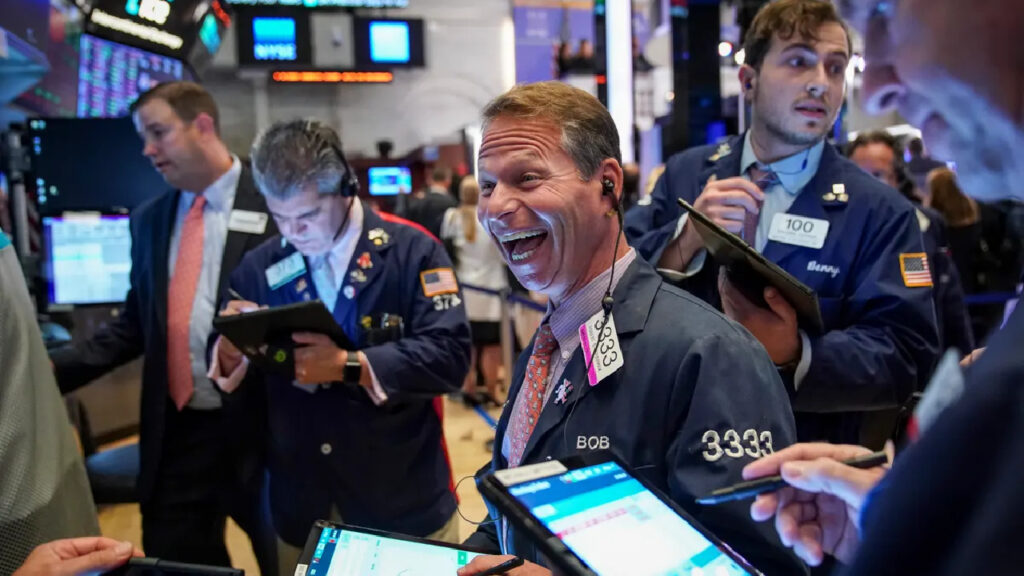Markets
Bulls Reap $120 Billion in Stock Market Rally
The Stock Market Rally has turned out to be a major blow for investors who were betting against stocks, causing significant losses. Recent data from S3 Partners reveals that total short interest in the U.S. market has surpassed $1 trillion this month, reaching its highest level since April 2022. This represents approximately 5% of the total tradable shares and marks an increase from $863 billion at the beginning of the year.
Stock Market Rally Inflicts Heavy Losses on Bears
Short sellers engage in the practice of borrowing shares and subsequently selling them, with the hope of buying them back at a lower price in the future and profiting from the difference. Despite the bearish sentiments, these investors have continued to add to their wagers in recent weeks, while the S&P 500 has been on a steady climb, reaching a 14-month high. In 2023 alone, the index has surged by 14%, including a 5% increase in June.
However, this rally has resulted in substantial losses for short sellers, with approximately $120 billion in mark-to-market losses incurred so far this year, including a staggering $72 billion in the first half of June alone, as reported by S3.
The majority of these bearish bets are placed by hedge funds and other institutional investors, highlighting their concerns about the ongoing market rally. Factors such as limited breadth, stretched valuations, and the possibility of further interest-rate hikes by the Federal Reserve contribute to their unease.
Ihor Dusaniwsky, the managing director of predictive analytics at S3, explained that many investors and hedge funds still believe that the current rally is due for a pullback, or at least expect some of the high-performing stocks to lose momentum and revert back to average performance levels.
Get WSJ Print Edition Subscription 1 Year for $211
Another contributing factor to the surge in short selling is the leverage being added by hedge funds who started the year with a defensive position. Dusaniwsky elaborated that these funds are increasing their exposure to the market by expanding both their long and short holdings, attempting to catch up after missing out on the early-year rally.
Among the companies with the highest short positions are some of the hottest stocks in the market this year, including Tesla, Apple, Microsoft, Nvidia, and Amazon.com. Tesla, in particular, surpassed Apple to claim the top spot on June 8. Out of these five companies, Tesla exhibits the highest short interest as a percentage of available shares, standing at 3.3%.
Tesla shares have more than doubled in value in 2023, while Nvidia has experienced a nearly threefold increase. The other three stocks have each witnessed at least a 40% rise. Collectively, these large-cap technology stocks are responsible for the majority of the S&P 500’s overall gains.
As a result, investors who have shorted Elon Musk’s electric-vehicle company have suffered losses of around 78%, equivalent to $12.4 billion, this year. Those who bet against Nvidia’s shares have fared even worse, with losses amounting to 105%. It’s important to note that losses in short sales can potentially be unlimited since the borrowed shares need to be repurchased and returned at some point.
Moreover, the most popular short trades have caused significant losses, with a Goldman Sachs Group index tracking the 50 most-shorted stocks in the Russell 3000 outperforming the S&P 500 by 20% this year.
Get Wall Street Journal Digital and The Economist for $129
Analysts warn that more pain may be in store as many institutions increase their exposure to the stock market, contributing to a prolonged period of gains for equities. Over the past 13 sessions, the S&P 500 has advanced in nine, reinforcing the perplexity felt by professional investors in the face of a seemingly relentless rally.
Jason Draho, the head of asset allocation Americas at UBS Global Wealth Management, highlights that investors have cautiously positioned themselves since last summer, anticipating an economic downturn that has yet to materialize. As the market continues to climb, those on the sidelines are increasingly compelled to devise strategies for reentering the market.
In the midst of these developments, more and more investors are utilizing exchange-traded funds (ETFs) to place bets against the market. The ease of creating new shares in ETFs to meet demand has resulted in low borrowing fees for these shares. By the end of May, investors had shorted ETFs amounting to approximately $235 billion, as reported by S3.
It’s important to note that not all short positions are purely bearish plays. Investors often short ETFs as a means of hedging their exposure to sectors that include individual stocks they favor, as explained by Rich Lee, the head of program and ETF trading at Robert W. Baird.
Get The New York Times and Barron’s News for $129
Additionally, some of the popular ETF short trades have, in practice, functioned more like long positions. In May, two out of the three most profitable ETF short trades, based on percentage gain, were investors shorting inverse ETFs. These inverse ETFs seek to provide returns opposite to their underlying assets.
By shorting an inverse ETF that tracks a benchmark, an investor can potentially outperform the benchmark by taking advantage of tracking errors, which cause an inverse ETF to drop more than the percentage rise of the asset it tracks.
One example of the growing popularity of this strategy is betting against the ProShares Ultrapro Short QQQ ETF, which aims to provide three times the opposite return of the Nasdaq-100 Index. As of the end of May, the inverse ETF had accumulated $609 million in short interest, according to S3. Similar bets against the smaller Direxion Daily Semiconductor Bear 3X ETF are also prevalent.
As the stock market rally persists and losses for short sellers continue to mount, professional investors find themselves increasingly perplexed by the current market conditions. Jeffrey Gundlach, the founder and CEO of DoubleLine Capital, expressed his concern, stating that the stock market is exhibiting signs of a mania and drawing comparisons to the lead-up to January 4, 2022, where a retracement followed a period marked by shorts and pessimism.

